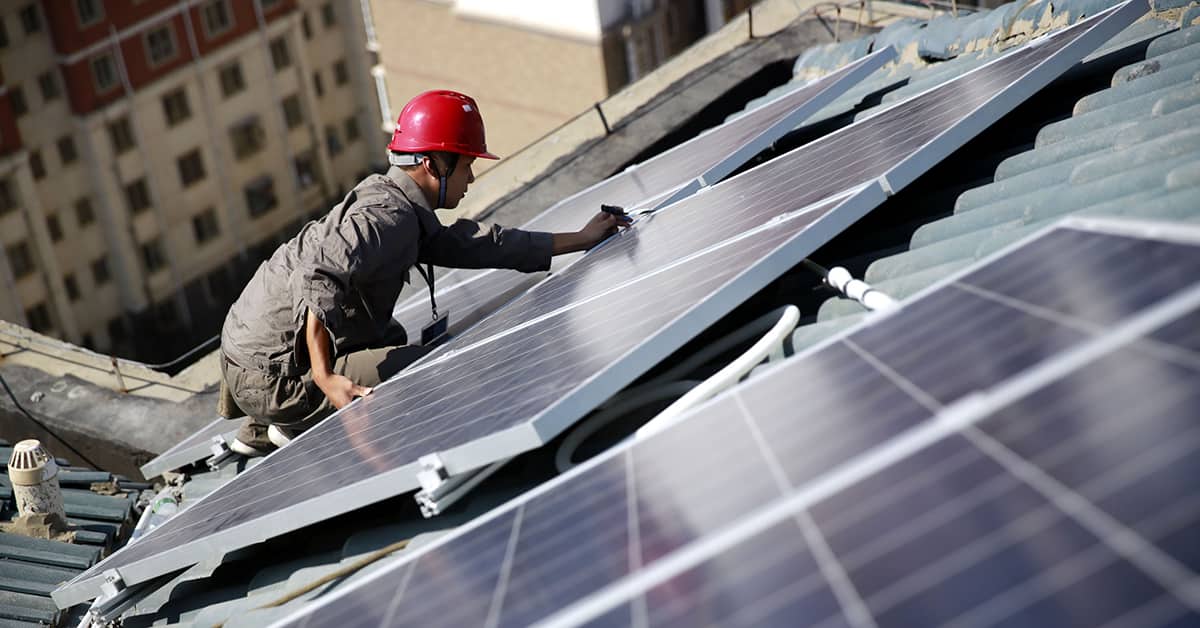China maps a pragmatic route through environmental issues.

When ExxonMobil announced, in November, its decision to build a multibillion-dollar chemical plant in southeastern China, it noted a commitment to both “climate solutions” and “China’s national petrochemical development priorities.”
The announcement reflected China’s two-pronged approach to environmental-goals embedded in government policy and supported by the nation’s network of environmental, social and governance (ESG) finance. One prong projects ESG in the context of a Chinese government road map for fighting climate change through carbon neutrality, which President Xi Jinping in late 2020 declared as a benchmark achievable by 2060. A complementary goal of reaching a carbon emissions peak before 2030 was mapped out in October 2021 by China’s cabinet and administrative authority, the State Council.
The second prong acknowledges the benefits of ESG but imposes boundaries on it for the sake of growing the Chinese economy and raising the Chinese people’s standard of living—which includes expanding global markets through initiatives such as the Belt and Road Initiative, a trade and infrastructure program energetically promoted by Xi since 2013.
Environmental goals are being diligently pursued in China, as Xi promised, but with a pragmatic nod to “development priorities.”
A Tricky Balancing Act
Of late, China has found that balancing economic growth and environmental progress can be challenging. A spring coal shortage that was dampening power supplies as far back as May brought on rationing by September, with significant impact on 20 provinces. “China’s recent electricity shortage was to some degree caused by rising power demand,” according to an Institute of International Finance (IIF) report, “but mostly due to the constraints imposed by the energy intensity target and coal supply.” The weeks-long crunch for cities and factories ended in November with a burst of coal burning.
But the shortage did not prevent the State Council from releasing carbon peak and related environmental goals a few weeks later, just before COP26 in Glasgow. Neither did the brownouts affect China’s commitment to the emissions-control directives written into its 14th Five-Year Plan, which launched in 2021. There is a nationwide push for electric vehicles, clean energy and other public-service goals.
Government environmental efforts are supported by growing interest in sustainability financing and investment. A recent study by Tsinghua University’s Institute of Climate Change and Sustainable Development counted more than 124 ESG-themed investment funds operating in China, with a combined $17 billion in search of green targets. Appropriate investment targets will surely arise, the report suggested, as China will need more than $20 trillion invested in energy alone by 2050 to keep global temperatures under 2°C.
The heightened interest raises the risk of “greenwashing.” Some investors have grown cautious about companies and ESG-themed funds, as some have been shown to back well-meaning but weak—or even gimmicky and useless—projects, says a recent Securities Times report.
In response, China is moving to improve access to information about corporate ESG. At the end of October, the Ministry of Ecology and Environment (MEE) proposed new ESG disclosure mandates that would make corporate data publicly available on the national enterprise credit information database. The relatively weak fines for noncompliance initially—roughly $15,000—would “limit the initial impact,” according to Fitch Ratings, but the law still be significant “as it would mark China’s first mandatory ESG information reporting scheme.”
It may be just the nudge that is needed. “China in general is considered to be more of a regulatory-driven market, and companies generally don’t act unless or until asked to,” Franklin Templeton equity portfolios Michael Lai comments in a blog post titled Bridging the ESG Gap in China. However, he adds, “we have found that Chinese companies remain proactive in ESG measures and remain dedicated to either learning more from what investors want to see from an ESG perspective, or setting out agendas in disclosing how sustainability features in their long-term strategies.”
Chinese governments at every level are offering further enticements with ESG-friendly financial incentives. State-owned enterprises as well as multinationals such as ExxonMobil have gotten on board through greenfield investments, energy-saving retrofits and green products. Manufacturers of battery-powered vehicles and builders of wind farms are now in a broad class of ESG-targeted enterprises that can tap a range of tailor-made bank loans, bonds and equity markets for financial support.
The central bank–the People’s Bank of China (PBoC)–added incentives in November, introducing a financial tool to get more domestic lenders behind clean air efforts. For a limited time, the central bank is offering 60% of a lender’s principal at a one-year interest rate of 1.75% for loans related to carbon-emissions reduction. “The emission reduction supporting tool will mainly be used to support the development of clean energy, energy-saving and environmental services and emission reduction technologies,” asset manager China International Capital Corp. commented in a November report.
China’s retail and institutional investors are betting on ESG opportunities through green bonds, carbon trading and targeted funds. In the first half of 2021, China’s green bond issuance hit $22 billion, according to the Climate Bond Initiative, putting it fourth globally by market value.
Data from the central bank shows that outstanding green loans now stand at about 14.8 trillion yuan (about $2.3 trillion), accounting for 7.8% of total loan balance.
Banks are in the game. As of April, Bank of China reported its green-project credit accounted for 8.15% of all outstanding domestic loans, a portfolio worth more than $157 billion. Agricultural Bank of China says green credit accounted for 10% of its loans. Beijing-based Huaxia Bank reported quadrupling its green loan portfolio in four years, hitting $28.2 billion at the end of 2020.
China Construction Bank helped finance the government-backed National Green Development Fund, which launched in 2020 having raised $12.6 billion for environmental projects in 11 provinces and cities along the Yangtze River. The policy lender China Development Bank has issued credit worth about $127 billion since 2019 for green development along the Yangtze.
China’s ESG efforts have converged in a growing market that combines support for long-term climate goals and near-term investment strategies, Bank of China President Liu Jin told an IIF forum last spring. But China’s priorities, such as economic growth, loom large. Moreover, state banks and policy lenders may be more willing to shoulder the risks of green projects than retail and institutional investors.
A report in October by asset manager Haitou Global offered a window to the realities of China’s two-pronged approach by looking at ESG investing through the eyes of Asian billionaires. All returns being equal, billionaires favor sustainable development and want their money to support the greater good, Haitou CEO Wang Jinlong says in the report. But not all returns are equal. They also want assurances that their ESG investments support viable companies that deliver. “Only by turning ESG into a profit-making investment strategy will more Asian billionaires find answers to their many concerns about including ESG in core investments,” Wang says.
Of course, for public officials or ordinary citizens, the overriding need to transition to a sustainable living model may drive “greening” efforts forward with or without returns. “Overall,” concludes Templeton’s Lai, “ESG in China is a mixed bag but seems to be headed in a positive direction.”



